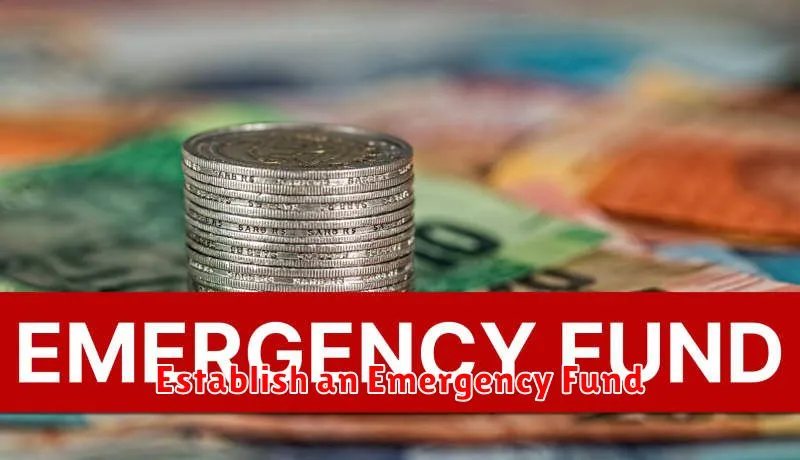Buying a new car is a big decision, both emotionally and financially. It’s a significant investment that will impact your budget for years to come. Before you start browsing dealerships and test driving, it’s crucial to create a solid financial plan. This will help you make informed decisions, avoid overspending, and ensure you can afford your dream car without jeopardizing your financial well-being.
A well-structured financial plan will guide you through the entire process, from determining your budget and exploring financing options to understanding your monthly payments and managing your car ownership expenses. By taking the time to plan ahead, you can navigate the car buying process with confidence and achieve your goals without financial stress. This article will provide you with a step-by-step guide to making a comprehensive financial plan that will empower you to make smart choices and drive away in your new car with peace of mind.
Determine Your Budget
Before you even start looking at cars, it’s crucial to establish a clear budget. This will guide your entire car-buying journey and prevent you from overspending. Start by assessing your current financial situation. Consider your income, expenses, and existing debt. Determine how much you can comfortably afford to spend each month on car payments.
Use online car loan calculators to estimate your monthly payments based on different loan terms and interest rates. This will give you a realistic picture of how much you can borrow. Don’t forget to factor in other car-related expenses like insurance, registration, and maintenance. Remember, a lower monthly payment usually means a longer loan term and potentially higher overall interest costs.
It’s wise to stick to a maximum debt-to-income ratio (DTI) of 36%. This means that your total monthly debt payments, including car payments, shouldn’t exceed 36% of your gross monthly income. A lower DTI will improve your chances of getting approved for a loan and potentially qualify you for better interest rates.
Having a defined budget will help you avoid emotional decisions and stick to your financial goals. It will empower you to negotiate with dealers from a position of strength. Remember, don’t let the allure of fancy features or aggressive sales tactics push you beyond your budget. Stay disciplined and stick to your predetermined financial plan.
Calculate Your Down Payment
A down payment is a significant part of buying a new car. It’s the initial amount of money you pay upfront, which reduces the amount you need to finance. A larger down payment can mean a lower loan amount, resulting in lower monthly payments and less interest paid over the life of the loan.
To determine your down payment, consider your financial situation and the car you’re interested in. A good starting point is to aim for 20% of the car’s price as a down payment. This can help you secure a better interest rate and potentially avoid private mortgage insurance (PMI) for a car loan.
You can use online calculators or budgeting tools to estimate your down payment based on the car’s price and your financial situation. Remember, a larger down payment can lower your monthly payments and overall interest expenses.
While a large down payment might feel like a significant expense, consider it an investment. It can help you save money on interest over the life of your loan.
Research Car Loans and Interest Rates
Once you have a realistic budget in mind, it’s time to start researching car loans and interest rates. You can get pre-approved for a loan from a bank, credit union, or online lender. This will give you a good idea of what you qualify for and what your monthly payments will be. It’s also a good idea to compare interest rates from multiple lenders to ensure you’re getting the best deal.
When shopping for car loans, pay attention to the annual percentage rate (APR). This is the total cost of borrowing money, including the interest rate and any fees. A lower APR will result in lower monthly payments and less overall interest paid. You should also factor in the loan term, or the length of time you will be making payments.
Here are some tips for getting the best car loan rates:
- Improve your credit score: A higher credit score will qualify you for lower interest rates.
- Shop around for the best rates: Don’t just accept the first offer you receive. Compare rates from several lenders.
- Consider a shorter loan term: A shorter loan term will result in higher monthly payments, but you will pay less interest overall.
- Negotiate the interest rate: You may be able to negotiate a lower interest rate, especially if you have a good credit score and are willing to make a large down payment.
Explore Financing Options
Once you’ve determined your budget, it’s time to explore your financing options. Financing is essential for most car buyers, as the average price of a new car is $48,000. While you may have saved up a significant amount, most people need financing to cover the remaining cost.
There are several ways to finance a new car, but the most common options are:
- Auto Loans: An auto loan is a loan specifically for the purpose of purchasing a vehicle. You can get an auto loan from a bank, credit union, or online lender. Shop around for the best rates and terms.
- Dealer Financing: Many dealerships offer financing through their own lenders. This can be a convenient option, but it’s important to compare rates and terms with other lenders.
- Leasing: Leasing is another option for financing a new car. With a lease, you’re essentially renting the car for a set period of time. You’ll make monthly payments for the use of the car, but at the end of the lease, you’ll return the car to the dealership.
It’s important to compare all your financing options and choose the one that best fits your financial situation. Consider factors like interest rates, loan terms, and monthly payments.
Get Pre-Approved for a Loan
Getting pre-approved for a loan before you start shopping for a new car is a crucial step in your financial plan. It allows you to understand how much you can afford to borrow and gives you a clear picture of your budget. This process involves providing your financial information to a lender, who will then evaluate your creditworthiness and provide you with a pre-approved loan amount.
Here’s why pre-approval is so important:
- Establishes Your Buying Power: Pre-approval gives you a concrete number to work with, allowing you to focus on vehicles within your budget.
- Negotiating Leverage: Armed with a pre-approved loan, you can confidently negotiate with dealerships, knowing your financing is secured.
- Saves Time: The pre-approval process can save you valuable time during the car buying process. You won’t need to waste time applying for financing at the dealership.
- Reduces Stress: Knowing your financial situation beforehand eliminates uncertainty and helps you make informed decisions without pressure.
Before you apply for pre-approval, consider shopping around for the best interest rates and loan terms. This will help you secure the most favorable financing option for your needs.
Negotiate the Car Price
Negotiating the car price can be a daunting task, but it’s crucial to ensure you’re getting the best deal possible. Start by researching the fair market value of the car you’re interested in. Websites like Kelley Blue Book, Edmunds, and NADAguides can provide you with accurate price estimates. Armed with this information, you can confidently approach the dealership.
Don’t be afraid to haggle! Dealerships anticipate negotiation, so be prepared to make an offer lower than the sticker price. Remember, it’s a business transaction, and you should aim for a win-win scenario. Be polite and respectful throughout the process, but firm in your negotiation.
Consider asking about incentives and rebates. Many manufacturers offer special deals for new car buyers, so make sure to inquire about any available options. Additionally, you can leverage your existing vehicle by trading it in, potentially getting a better deal on your new car.
Be aware of the hidden fees that can be added to the final price. Review the contract carefully and ensure all charges are legitimate. Negotiate these fees as well if possible. Remember, the goal is to secure the best possible price for your new car.
Factor in Additional Costs (Taxes, Fees, Insurance)
The sticker price on a new car isn’t the only cost you’ll face. You’ll need to budget for a variety of additional expenses, including taxes, fees, and insurance. These can quickly add up, so it’s important to factor them into your financial plan.
Sales tax varies by state, but you can expect to pay around 5% to 10% of the car’s purchase price. In addition to sales tax, you may also have to pay registration fees, title fees, and documentation fees. These fees can range from a few hundred dollars to over a thousand dollars.
Finally, you’ll need to factor in the cost of car insurance. Your insurance premium will depend on a number of factors, including your age, driving record, and the type of car you buy. It’s a good idea to get quotes from multiple insurance companies before you purchase your car so you can compare rates.
By factoring in all of these additional costs, you can get a more accurate picture of how much a new car will truly cost you.
Create a Realistic Payment Schedule
Once you have a good understanding of your budget and the car you want, it’s time to start planning your payment schedule. This will help you determine how much you can afford to pay each month and how long it will take to pay off the loan. A realistic payment schedule should factor in your monthly expenses, savings goals, and other financial obligations.
To create a realistic payment schedule, you should:
- Consider your monthly expenses: This includes your rent or mortgage, utilities, groceries, transportation, and other recurring costs. Subtract these expenses from your monthly income to get an idea of how much money you have left over for a car payment.
- Estimate your car payment: Use online car payment calculators to estimate your monthly payment based on the loan amount, interest rate, and loan term. Make sure to factor in any other costs associated with buying a car, such as sales tax, registration fees, and insurance.
- Factor in your savings goals: If you’re saving for other things, such as a down payment on a house or a vacation, factor these savings goals into your budget and adjust your car payment accordingly.
- Keep your debt-to-income ratio in mind: Lenders use your debt-to-income ratio (DTI) to assess your ability to repay loans. A lower DTI typically results in a better interest rate. Aim for a DTI of 36% or less to avoid putting too much strain on your finances.
By following these steps, you can create a realistic payment schedule that fits your budget and helps you achieve your financial goals.
Review and Adjust Your Budget
Before you start shopping for a new car, it’s crucial to review and adjust your budget. This means taking a hard look at your income and expenses to see how much you can realistically afford to spend on a car.
Start by tracking your income and expenses for a few months. Use a budgeting app, spreadsheet, or even just a notebook. This will give you a clear picture of where your money is going and how much you have left over each month. Once you have this information, you can start to identify areas where you can cut back on spending.
Remember, your car payment should not be more than 15% of your monthly take-home pay. This will leave you with enough money for other important expenses, such as rent, utilities, and groceries.
It’s also a good idea to consider how much you can save for a down payment. A larger down payment will reduce your monthly car payments and save you money on interest.
Consider Trade-In Value
The value of your current car is a crucial factor in your financial plan. You can trade in your old car to offset the cost of a new car. To get the best value, research the current market value for your car using online tools or by contacting local dealerships.
Remember, the dealer’s offer might be lower than the actual market value. Consider getting a pre-trade-in appraisal from a third-party service to understand your car’s true worth.
Negotiating with the dealer about the trade-in value is essential. A higher trade-in value directly reduces your out-of-pocket expenses and improves your overall financial plan for buying a new car.
Shop Around for Car Insurance
One of the most significant costs of owning a car is insurance. Before you even start car shopping, it’s essential to shop around for car insurance quotes to get an idea of what you’ll be paying. You can use online comparison websites, contact insurance brokers, or talk to your existing insurer to get quotes. Make sure you factor in your driving history, the type of car you’re considering, and the coverage you need when comparing prices.
Getting multiple quotes will help you compare prices and coverage options, giving you a clearer picture of how much your insurance will cost. This is crucial for budgeting, as it helps you understand the total cost of owning a new car. Also, some insurance companies offer discounts for bundling auto and other types of insurance, so make sure to inquire about those options.
Finalize Your Financing
Once you have a clear picture of your budget and what you can afford, it’s time to finalize your financing. This involves determining how much you’ll be borrowing, the interest rate you’ll be paying, and the length of your loan term.
To get the best possible financing, it’s important to shop around and compare offers from different lenders. You can use online tools or contact lenders directly to get pre-approved for a loan. This will give you a good idea of the interest rates and loan terms you qualify for.
When comparing loan offers, be sure to pay attention to the APR (Annual Percentage Rate). This is the total cost of your loan, including interest, fees, and other charges. The lower the APR, the less you’ll pay in the long run.
It’s also important to consider the length of your loan term. A longer loan term will result in lower monthly payments, but you’ll end up paying more in interest over the life of the loan. A shorter loan term will result in higher monthly payments, but you’ll pay less in interest.
Once you’ve found a loan offer that meets your needs, be sure to carefully review the terms and conditions before signing on the dotted line.
Establish an Emergency Fund

Before you even begin thinking about a car loan, it’s crucial to have an emergency fund in place. This fund should cover at least three to six months’ worth of essential expenses, such as rent, utilities, groceries, and transportation. A strong emergency fund will provide a financial safety net if you face unexpected expenses like car repairs, medical bills, or job loss. This will prevent you from having to tap into your car savings, potentially delaying your car purchase.
Think of it as a buffer. It’s like having a spare tire for your finances. A healthy emergency fund ensures you’re prepared for life’s curveballs, without having to sacrifice your car-buying goals.
Review Your Plan Regularly

Once you’ve created your financial plan, it’s crucial to review it regularly. Life is full of unexpected changes, and your financial situation can change quickly. Your income, expenses, and even your car buying goals might shift over time. Reviewing your plan allows you to make necessary adjustments and stay on track.
Here are some key things to consider when reviewing your financial plan:
- Track your progress: Are you saving enough each month? Have you made any significant changes to your spending habits?
- Check for any unexpected changes: Have you experienced a job loss or a significant increase in expenses? Have interest rates changed, impacting your loan options?
- Re-evaluate your goals: Are you still comfortable with your car buying timeline? Have your needs or priorities changed?
By regularly reviewing and adjusting your plan, you can ensure it remains relevant and helps you achieve your car buying goals.

